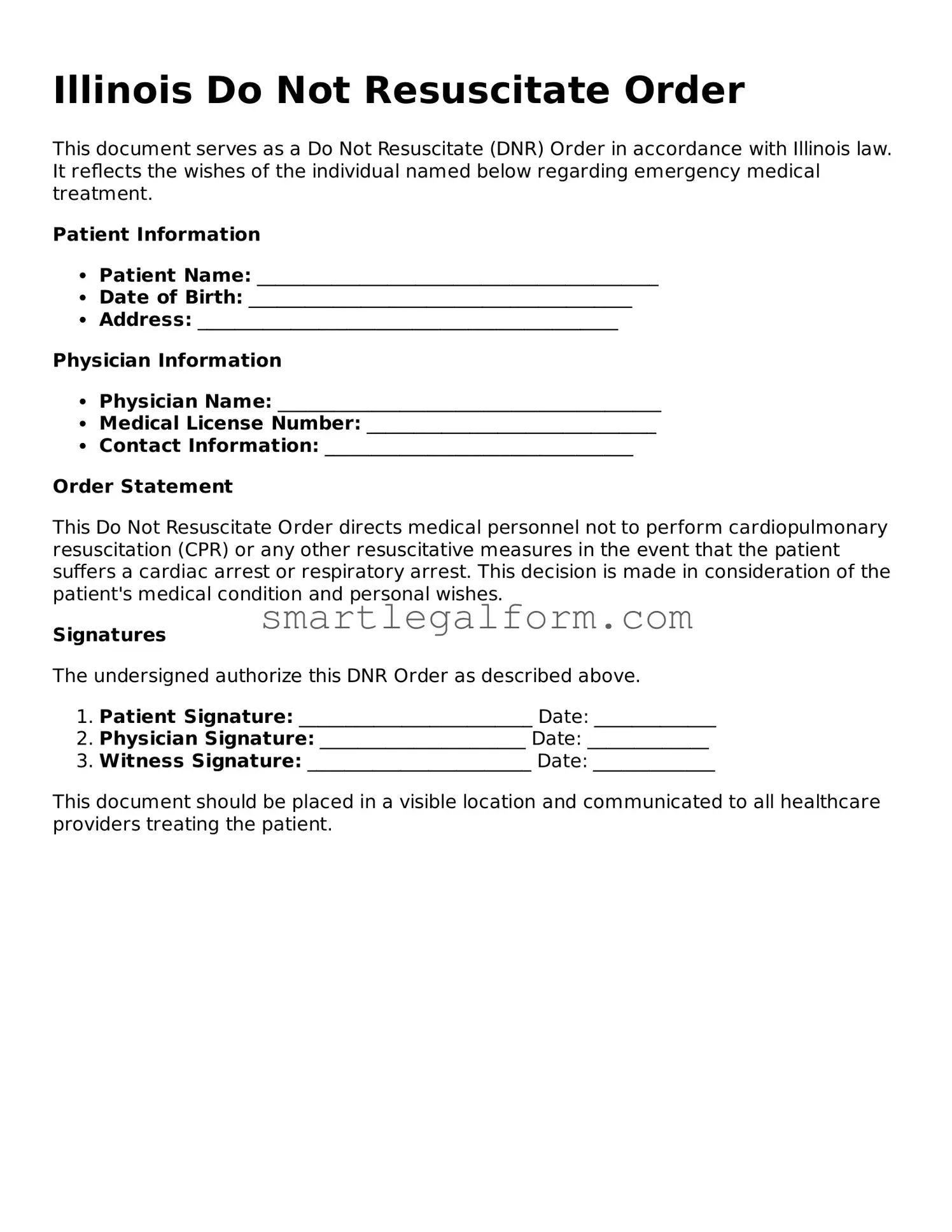When filling out the Illinois Do Not Resuscitate (DNR) Order form, individuals often make several common mistakes that can lead to confusion or unintended consequences. Understanding these pitfalls can help ensure that the form accurately reflects one's wishes regarding medical treatment.
One frequent error is not signing the form. A signature is essential for the DNR order to be valid. Without it, healthcare providers may not recognize the document, and resuscitation efforts could occur despite the intent to avoid them. Always ensure that the form is signed and dated.
Another mistake is failing to include the name of the patient clearly. It is crucial to provide the full legal name as it appears on official documents. Ambiguities in the name can lead to misidentification and complications during emergency situations.
Some individuals forget to specify the date the DNR order takes effect. This omission can create uncertainty about when the order should be honored. It’s best to clearly indicate the effective date to avoid any confusion for medical personnel.
Additionally, people sometimes neglect to discuss their wishes with family members or healthcare providers. Open communication is vital. Family members should understand the patient’s desires to prevent misunderstandings during critical moments.
Another common issue is not updating the form when circumstances change. Life situations, such as a change in health status or personal beliefs, may necessitate a revision of the DNR order. Keeping the document current is essential for it to reflect the individual’s current wishes.
Some individuals may also overlook the importance of having witnesses sign the form. In Illinois, having two witnesses can help validate the DNR order. Without these signatures, there may be challenges to the order’s legitimacy, especially in emergency situations.
Lastly, people often forget to keep a copy of the DNR order in an accessible location. It should be readily available to healthcare providers. Keeping copies in places like the refrigerator or with a primary care physician can ensure that medical personnel can easily find and honor the order when needed.
